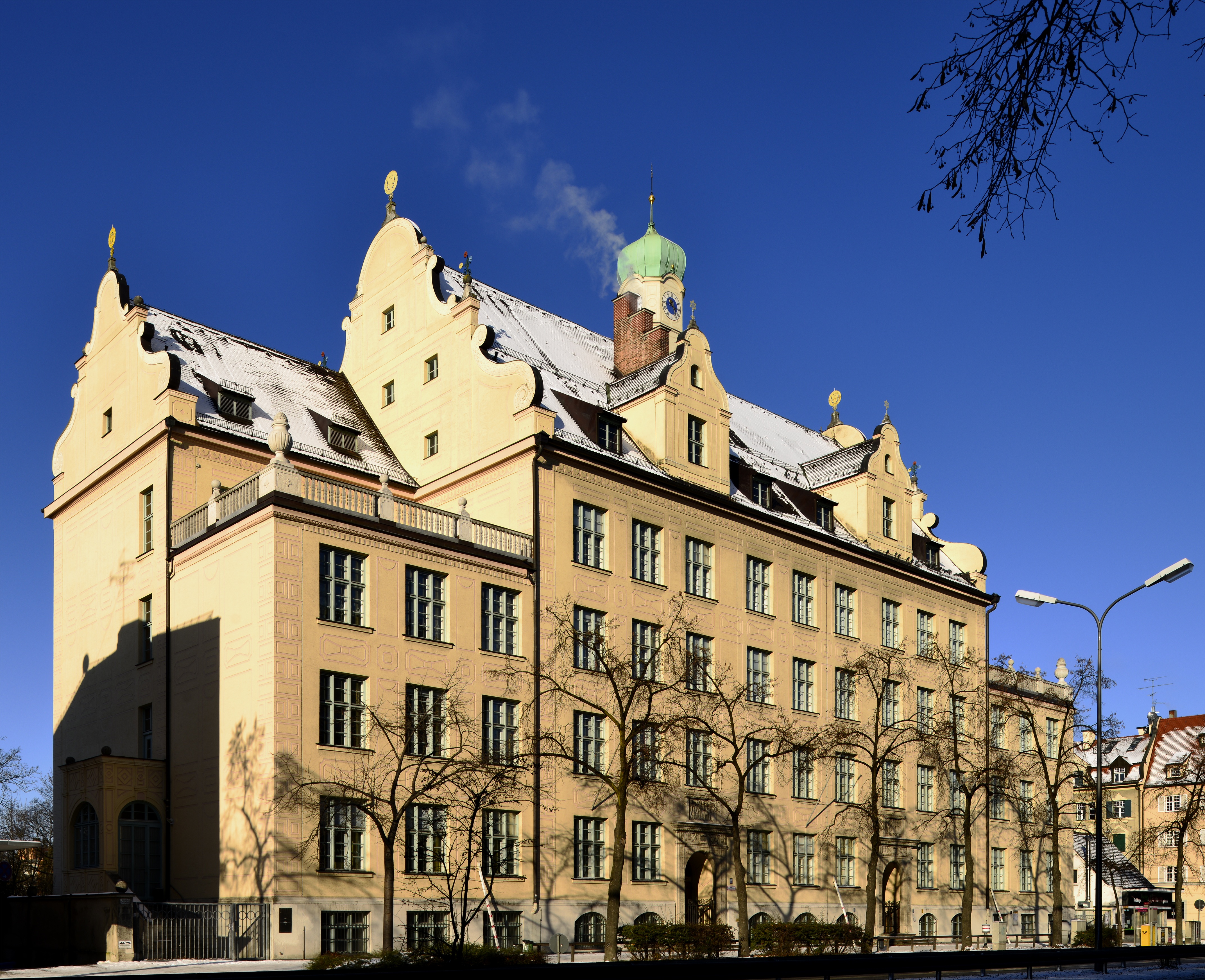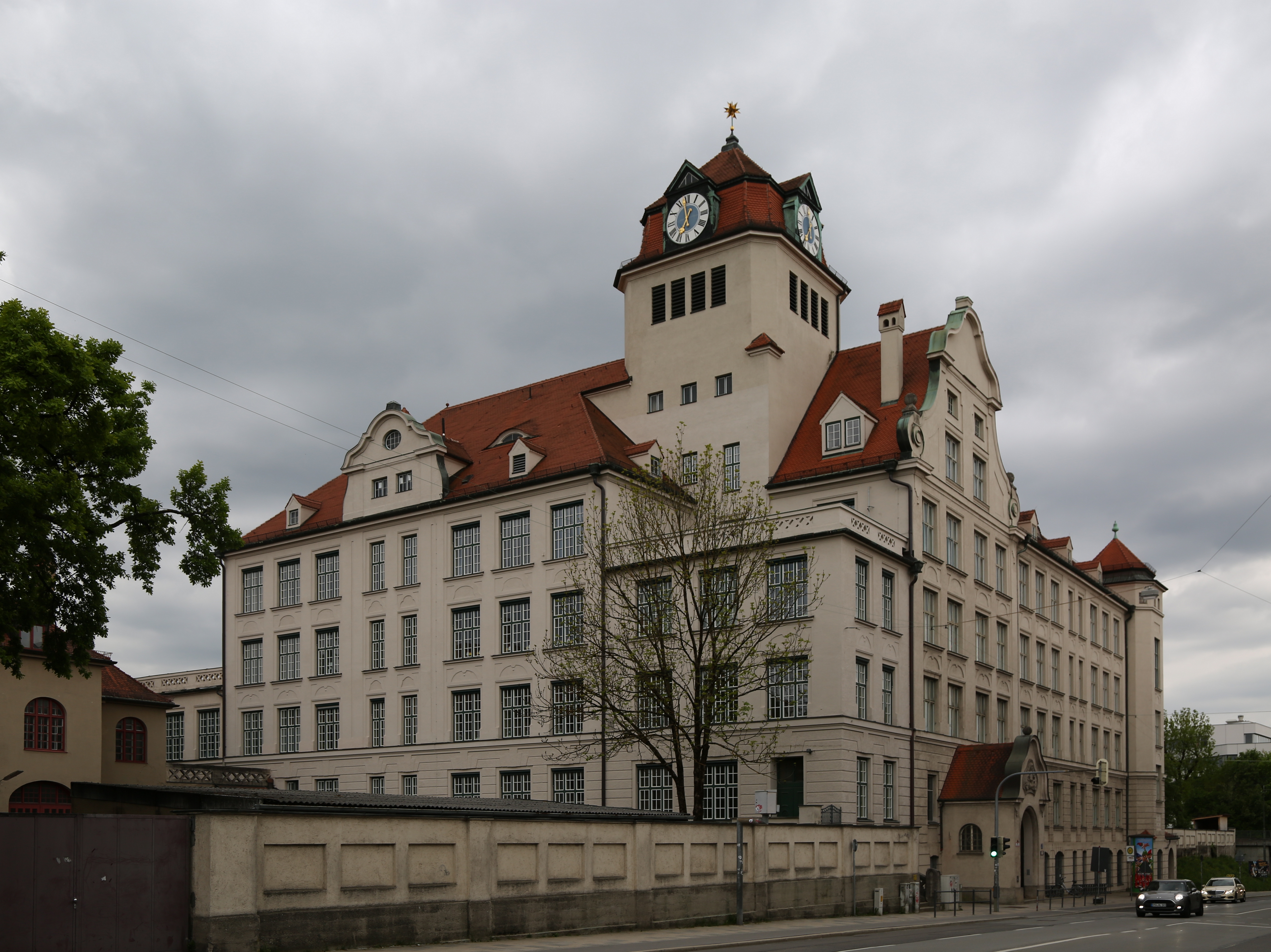|
Fürstenrieder Straße
The Fürstenrieder Straße is an almost five-kilometer-long important inner-city connecting road in Munich. It is named after the Fürstenried Palace, which lies near its southern end. Route The Fürstenrieder Straße leads through the districts of Laim, Sendling-Westpark and Hadern to the northern edge of Fürstenried and forms a section of the only partially completed Outer Ring. Over almost its entire length it is made up of six-lanes with a green central strip. It is also part of the shortest inner-city connection between the Bundesautobahn 8 (Westast) and the Bundesautobahn 95. The road starts at Landsberger Straße in Laim as the southern continuation of Wotanstraße. It runs in a straight line to the south, crosses Agnes-Bernauerstraße and Gotthardstraße and crosses the Bundesautobahn 96 at junction 38. It passes close to Westpark, from which it is separated only by several school buildings (''Erasmus-Grasser-Gymnasium'', ''Ludwigsgymansium''). It then passes Wald ... [...More Info...] [...Related Items...] OR: [Wikipedia] [Google] [Baidu] |
Westpark (Munich)
The Westpark is a large urban public park in Munich, Germany. It was designed by landscape architect Peter Kluska and completed in 1983. It hosted the International Garden Expo 83 that same year. The park covers an area of (178 acres) extending 2.6 km from east to west. The Garmischer Straße divides the park into an eastern and western section. Sights and attractions Rose garden The rose garden is made up of more than 20,000 roses and 500 different rose species. There also are two popular beer gardens. Lake stage The western lake features a stage area (''Seebühne'') hosting open air movie screenings, live music and theater shows during the summer season. Asian gardens Four of the originally 23 national gardens of the exhibit are preserved. The very first authentic Chinese garden in Europe is a walled garden that might have been constructed for an historic scholar. Around a pond the walkways leads along the four seasons and four parts of a lifetime. The Japanese gard ... [...More Info...] [...Related Items...] OR: [Wikipedia] [Google] [Baidu] |
Fürstenrieder Straße 257
Fürstenrieder Straße 257 is a small residential and commercial building in Munich. It is registered as a historical building in the ''Bayerische Denkmalliste''. Description The house is located in the Munich district Sendling-Westpark opposite the Waldfriedhof, slightly south of the intersection Fürstenrieder Straße / Waldfriedhofstraße. It was built in 1927 by Wilhelm Born and served as a workshop and office for the Munich gravestone sculptor Georg Halbich, who also owned the neighbouring property at Fürstenrieder Straße 255. The building is an elongated one-storey building with a flat saddle roof A saddle roof is a roof form which follows a convex curve about one axis and a concave curve about the other. The hyperbolic paraboloid form has been used for roofs at various times since it is easily constructed from straight sections of lumber, .... The central part is raised like a pavilion and carries a tent roof. The narrow side on Fürstenrieder Straße has a class ... [...More Info...] [...Related Items...] OR: [Wikipedia] [Google] [Baidu] |
Fürstenrieder Straße 255
Fürstenrieder Straße 255 is a residential and commercial building in Munich. It is registered as a historical building in the ''Bayerische Denkmalliste''. Description The house is located in the Munich district Sendling-Westpark at the southeast corner of the intersection Fürstenrieder Straße The Fürstenrieder Straße is an almost five-kilometer-long important inner-city connecting road in Munich. It is named after the Fürstenried Palace, which lies near its southern end. Route The Fürstenrieder Straße leads through the distric ... / Waldfriedhofstraße, opposite the Waldfriedhof. On the site, the Munich gravestone sculptor Georg Halbich, who had his workshop on the neighbouring property at Fürstenrieder Straße 257, operated a flower kiosk in the 1920s there. In 1930, he had J. Wymer build a residential and commercial building in his native home style. Although the house stands at a prominent intersection, it is not designed as a corner house, but as a two-store ... [...More Info...] [...Related Items...] OR: [Wikipedia] [Google] [Baidu] |
Trams In Munich
The Munich tramway (german: Straßenbahn München) is the tramway network for the city of Munich in Germany. Today it is operated by the municipally owned Münchner Verkehrsgesellschaft (the Munich Transport Company, or MVG) and is known officially and colloquially as the ''Tram''. Previous operators have included ''Société Anonyme des Tramways de Munich'', the ''Münchner Trambahn-Aktiengesellschaft'', the ''Städtische Straßenbahnen'' and the ''Straßenbahn München''. The tram network interconnects with the MVG's bus network, the Munich U-Bahn and the Munich S-Bahn, all of which use a common tariff as part of the Münchner Verkehrs- und Tarifverbund (Munich Transport and Tariff Association, or MVV) transit area. As of 2012, the daytime tram network comprises 13 lines and is long with 165 stops. There is also a night tram service with four routes. The network is operated by 106 trams (as of 2012), and transported 98 million people in 2010 and 104 million people ... [...More Info...] [...Related Items...] OR: [Wikipedia] [Google] [Baidu] |
Trolleybus
A trolleybus (also known as trolley bus, trolley coach, trackless trolley, trackless tramin the 1910s and 1920sJoyce, J.; King, J. S.; and Newman, A. G. (1986). ''British Trolleybus Systems'', pp. 9, 12. London: Ian Allan Publishing. .or trolleyDunbar, Charles S. (1967). ''Buses, Trolleys & Trams''. Paul Hamlyn Ltd. (UK). Republished 2004 with or 9780753709702.) is an electric bus that draws power from dual overhead wires (generally suspended from roadside posts) using spring-loaded trolley poles. Two wires, and two trolley poles, are required to complete the electrical circuit. This differs from a tram or streetcar, which normally uses the track as the return path, needing only one wire and one pole (or pantograph). They are also distinct from other kinds of electric buses, which usually rely on batteries. Power is most commonly supplied as 600-volt direct current, but there are exceptions. Currently, around 300 trolleybus systems are in operation, in cities and towns in 4 ... [...More Info...] [...Related Items...] OR: [Wikipedia] [Google] [Baidu] |
Nymphenburg Palace
The Nymphenburg Palace (german: Schloss Nymphenburg, Palace of the Nymphs) is a Baroque palace situated in Munich's western district Neuhausen-Nymphenburg, in Bavaria, southern Germany. Combined with the adjacent Nymphenburg Palace Park it constitutes one of the premier royal palaces of Europe. Its frontal width of (north–south axis) even surpasses Versailles Palace. The Nymphenburg served as the main summer residence for the former rulers of Bavaria of the House of Wittelsbach. History Building history The palace was commissioned by the electoral couple Ferdinand Maria and Henriette Adelaide of Savoy to the designs of the Italian architect Agostino Barelli in 1664 after the birth of their son Maximilian II Emanuel. The central pavilion was completed in 1675. As a building material, it utilised limestone from Kelheim. The palace was gradually expanded and transformed over the years. It then quickly replaced the nearby Blutenburg Castle as major hunting lodge of the court and ... [...More Info...] [...Related Items...] OR: [Wikipedia] [Google] [Baidu] |
Boschetsrieder Straße
Boschetsrieder Straße is an inner city street in the Munich districts of Thalkirchen, Obersendling and Forstenried/Am Waldfriedhof, which runs west from Bundesstraße 11 (Plinganser-/Wolfratshauser Straße) on the Isar hillside to Kreuzhof, where it continues as the Fürstenrieder Straße. Building development For the expansion of the industrial area Obersendling of the ''Isarwerke'' in 1899, the chief board member of the Munich city expansion department, Theodor Fischer, designed a road network. In 1901 it was named Poschetsried after the former ''Hofmark'' (demarcated district of a manorial dominion) Poschetsried. Poschetsried, also known as Boschetsried, had emerged from the clearing of a farmer named Barschalk in the early 10th century and has been documented to be in the procession from the von Hörwarth family since 1593. From 1703, they renovated the seat there, which later became Fürstenried Palace of the House of Wittelsbach. The eastern end of Boschetsriede ... [...More Info...] [...Related Items...] OR: [Wikipedia] [Google] [Baidu] |
Munich Waldfriedhof
The Munich Waldfriedhof is one of 29 cemeteries of Munich in Bavaria, Germany. It is one of the larger and more famous burial sites of the city, known for its park-like design and tombs of notable personalities. The Waldfriedhof is considered the first woodland cemetery. Description The Munich Waldfriedhof is located in the southwest and borders several city districts today. It is separated in two sections, the old part and the new part (Alter Teil und Neuer Teil). It holds almost 60,000 graves. The Waldfriedhof is open every day from 8am and closes between 5pm and 8pm depending on the season. During the warmer months of the year the city arranges guided tours. The cemetery is connected to the public transport system MVV by several bus lines. Access to the graves by car is very limited. The cemetery borders the beginning Autobahn A95 in the south as well as other large roads in the north and east. History The ''Münchner Waldfriedhof'' as it is called in German was planned by t ... [...More Info...] [...Related Items...] OR: [Wikipedia] [Google] [Baidu] |
Bundesautobahn 96
is a motorway in southern Germany, leading from the Austrian border ( A14) near Lindau (Lake Constance) through Memmingen, Landsberg am Lech to Munich. Two European routes lead through the autobahn: E 43 and E 54. It was first planned to build a direct connection between Munich and Lindau before World War II, south of Ammersee. During the 1972 Summer Olympics in Munich, a section from Munich to Oberpfaffenhofen and Germering was built. A part of the road during those games were used for the road team time trial cycling event. Volume 1. Part 1. pp. 108, 122. The last two-laned section, from Wangen-Nord to [...More Info...] [...Related Items...] OR: [Wikipedia] [Google] [Baidu] |



_020.jpg)

